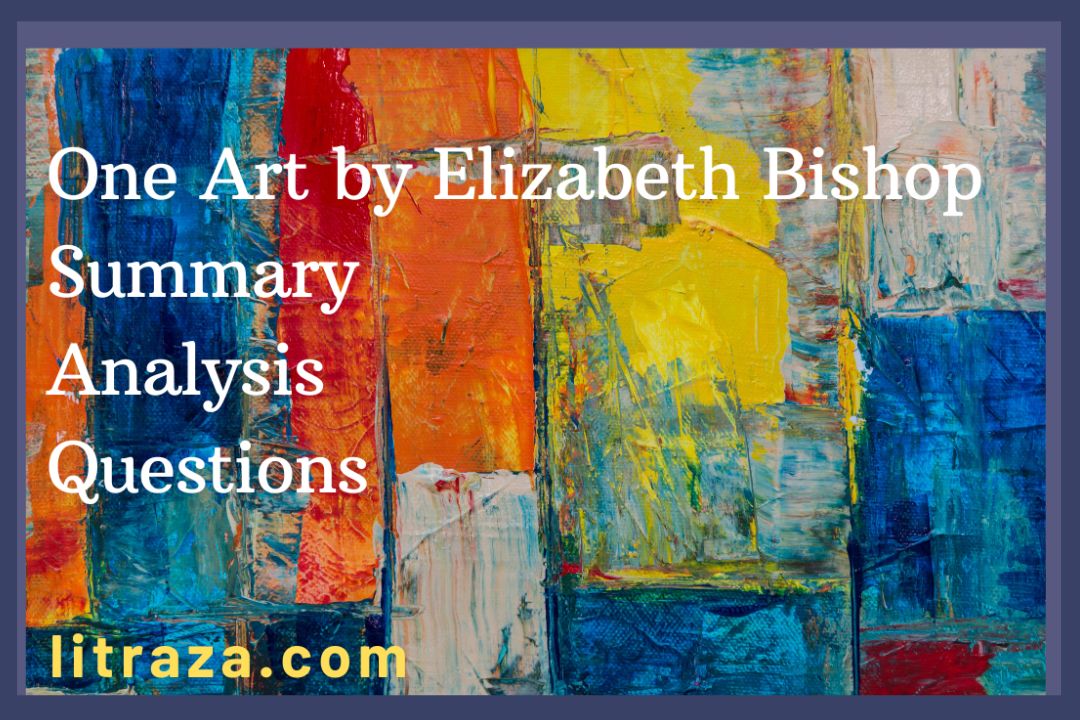Introduction
Because I Could Not Stop for Death by Emily Dickinson is an interesting poem. Emily Dickinson, in this poem, expresses her view of death and immortality. Nature, love, identity, spirituality, and self have been themes of Dickinson’s poetry. But death and immortality dominate her works. Because I could Not Stop for Death is not Emily Dickinson’s only poem on these subjects. She has written extensively about death. Notably, her views are unique and inspiring. In Because I Could Not Stop for Death, Emily Dickinson presents the Death angel as a suitor. He comes to pick her up in a carriage. Immortality accompanies Death in that carriage. All three of them travel toward eternity. This article, Because I Could Not Stop for Death by Emily Dickinson – Summary Analysis Questions, will help readers understand the poem. It will be handy for students and teachers.
Emily Dickinson – A Brief Biography
Emily Dickinson was born in Amherst, Massachusetts, America on December 10, 1830. At present, critics rank her as one of the finest poets of America. However, she did not get, or one should say that she did not try to gain popularity during her life. She was an introverted person who did not share her compositions for publication. Emily Dickinson wrote nearly 1800 poems of which only ten were published during her life. After her death, her sister, Lavinia, discovered her treasure of poems. She spent an isolated life and never married. Considering her era, her poems contain very revolutionary ideas. Dickinson’s poetry reflects the influence of William Wordsworth and Ralph Waldo Emerson. Wordsworth was her favourite for the depiction of nature while Emerson was for the idea of writing from direct experience. Shakespeare also inspired her a lot. Emily Dickinson died on May 15, 1886.
Text of the Poem Because I Could Not Stop for Death by Emily Dickinson

Summary of the Poem Because I Could Not Stop for Death by Emily Dickinson
Introduction
Because I Could Not Stop for Death by Emily Dickinson is an impressive poem. In this poem, the poetess has presented her views on death. Generally, people consider death a harsh reality. They think that it separates them from their loved ones. But Emily Dickinson presents the Death angel as a suitor who comes to take her on a ride in a carriage. The Death angel takes her to eternity. On the way to eternity, they pass through different places which remind the poetess of the different phases of life. Because I Could Not Stop for Death is a symbolic poem. Emily Dickinson described man’s journey from mortal life to immortal life. She has used vivid symbols to delineate different phases of this journey.
The Arrival of the Death Angel as a Suitor
Because I Could Not Stop for Death begins with the personification of Death and Immortality. The poetess says that she was so busy that she never thought about death which was to come sooner or later. But the Death angel came in a carriage like a suitor would come to pick up his beloved. Like any other woman, the poetess liked this chivalrous act of the Death angel. She let go of her labour and leisure and got on the carriage with Death.
Presence of Immortality in the Carriage
Having got on the carriage, the poetess realized that there was another partner in their journey. It was Immortality. The carriage moved on slowly with the poetess, the Death angel, and Immortality as passengers. At no point in this journey did the Death angel seem to be in any hurry. Therefore, the pace of the carriage was not very fast.
Different Phases of the Journey
During the journey, the poetess, the Death angel, and Immortality passed through different places. They passed by the school where kids were busy playing. A field of ripened corn also lay on their path. They further passed by the setting sun, or as the poetess would put it, the sun passed by them. These phases of the journey are actually different stages of life. They stand for childhood, youth, and old age respectively.
The Dress of the Poetess and the Weather
Toward the end of the journey, Emily Dickinson felt the cold nip of the dewy weather. It was because she wore a dress made of very delicate fabric. The gown was of gossamer while the tippet was of tulle.
The Grave of the Poetess
The poetess, the Death angel, and Immortality stopped before a house that seemed to be a bulge on the ground. The roof of this house was invisible while its cornice was under the ground. It was the grave of the poetess. The poetess says that despite her living in this house for centuries, she still felt it for less than a day.
Eternity – The Final Destination
Having felt the difference between real-time and time as she felt, the poetess realized that she had reached eternity. It was her final destination. At this moment, she realized that the direction of the movement of the horses was towards eternity.
Conclusion
Because I Could Not Stop for Death by Emily Dickinson is an attractive poem. The poetess does not share general feelings of fear and anxiety associated with death. The poem is an expression of submission before death.
Important Questions
Q1: Because I Could Not Stop for Death by Emily Dickinson depicts the journey of the poetess towards eternity. Discuss.
Q2: Discuss symbolism in the poem, Because I Could Not Stop for Death by Emily Dickinson.
Introduction
Because I Could Not Stop for Death by Emily Dickinson is a very beautiful poem. Like most of her poems, this poem also deals with her feeling and philosophy about death. Her views about death are contrary to those of the common people. She does not look at death as a cruel phenomenon that separates us from our loved ones. Instead, she believes that death is a step towards eternity, which is a state free from every fear and anxiety. Death opens the gate to the world of immortality and dissolves all the apprehensions of mortal beings.
Inevitability of Death
Emily Dickinson says that she was busy in her life and had not thought of death. But the Death angel did not forget her. He came to pick her up like a lover in a carriage. It is an expression of the inevitability of death. We remain so busy with the preoccupations of our lives that we do not think of death. It is only at the arrival of the Death angel that we realize the transitoriness of our lives. Death proves to be the ultimate reality of the scheme of the world.
Journey toward Eternity
Because I Could Not Stop for Death is a journey from the state of being mortal to immortal. It is a spiritual journey. All through life, man continues to learn from different experiences. He seeks spiritual solace in different activities. But this solace remains as temporary as life is. Emily Dickinson believes that the permanence of this feeling lies in eternity which we achieve only after death. Eternity in this sense is the goal of life. It cures a man of all his fears, anxieties, and agonies.
Symbolism in the Poem
The poem is replete with symbolism. The presentation of the Death angel as a lover is symbolic. The way Emily Dickinson describes his civility obliterates from our minds the harsh feelings about death. The presence of Immortality in the carriage stands for its companionship with us in the journey toward eternity. Emily Dickinson’s journey in the carriage symbolizes the journey of life. The description of the children playing on the school ground signifies childhood which is a carefree phase of life. Fields of ripened corn are the youth or mature period of life. The setting sun refers to the last phase of life, that is, old age. After this, the journey of life comes to an end and man achieves eternal life in the world hereafter. The house that is swelling on the ground is the grave of the poetess. These symbols reflect Emily Dickinson’s diversity and control of symbolism.
Conclusion
Because I Could Not Stop for Death by Emily Dickinson is a masterpiece of poetry. The poem is unique from a thematic point of view. Emily Dickinson’s personification of Death and Immortality and use of various symbols make it a poem worth-reading.
When I am Dead, my Dearest by Christina Rossetti is another unique poem on the subject of death.



